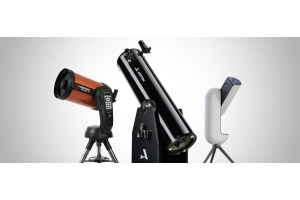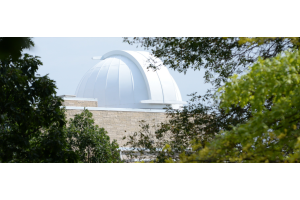
If you already know a little about visual astronomy, you've probably been star hopping without even realizing it. For example, you might already know you can use the “pointer” stars in the Big Dipper, Dubhe, and Merak to find Polaris, the Pole Star. During the winter, you can also use the three stars of Orion’s belt to find Sirius, the brightest star in the sky. However, both the Big Dipper and Orion can also be used to find other stars and constellations!
(If you're completely new to star hopping, or would like a refresher, we recommend checking out our Beginner's Guide To Star Hopping for the basics.)
We've gathered our top 10 star hopping targets and all the information you'll need to find them. Some are visible with the naked eye, and nearly all are visible with binoculars. They’re listed in order of right ascension (ie, their position in the sky) and are best seen in the following seasons:
Autumn: Messier 31 (The Andromeda Galaxy), NGC 869/884 (The Double Cluster)
Winter: Messier 34, NGC 2169 (The 37 Cluster), Messier 35
Spring: Messier 51 (The Whirlpool Galaxy), Messier 3
Summer: Messier 11 (The Wild Duck Cluster), Collinder 399 (The Coathanger), Messier 27 (The Dumbbell Nebula)
Messier 31 - The Andromeda Galaxy
The Andromeda Galaxy lies on the edge of naked eye visibility for many observers (depending on how dark the skies are and your eyesight), but is readily visible in both binoculars and telescopes.
To find it, you’ll first need to identify Cassiopeia. If you’re not already familiar with that constellation, you can find it on the opposite side of Polaris from the Big Dipper. However, be aware that during the autumn months, the Big Dipper is very low over the northern horizon and (depending on your latitude) may not be visible at all. (If the Big Dipper is too low, look above Polaris for a crooked M-shaped pattern of five stars. That’s Cassiopeia.)
Now draw a line through Navi and Shedar until you get to Alpheratz. This marks the northeastern corner of the Great Square of Pegasus but is actually a part of Andromeda. Hop eastward to Delta Andromedae and then eastward again to Mirach. From here, move northwest to Mu Andromedae, and then, within the same 10x50 binocular field of view, you’ll find Messier 31.
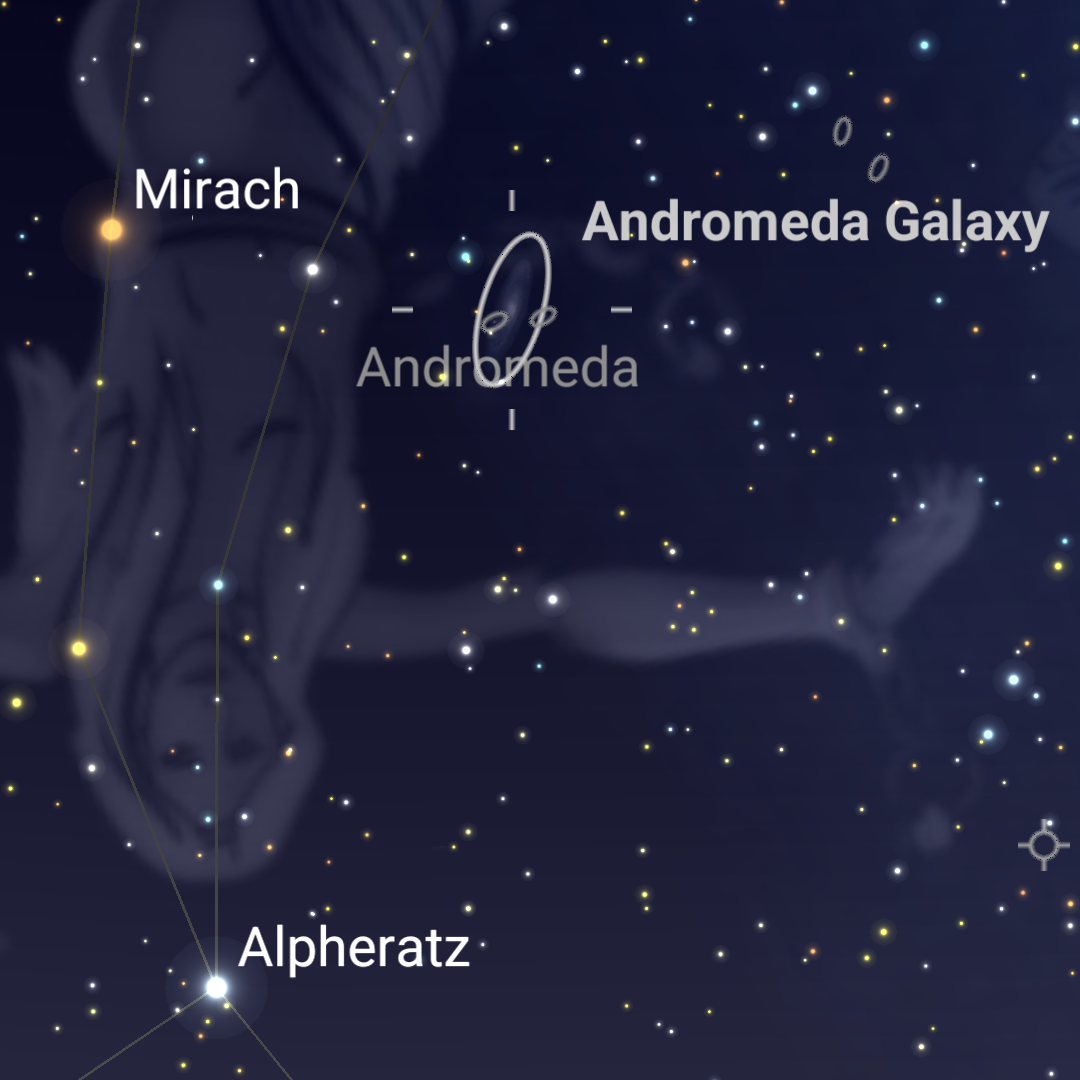
Image Credit: SkySafari
NGC 869/884 - The Double Cluster
Again, like the Andromeda Galaxy, the Double Cluster lies on the edge of naked eye visibility for many, but it’s potentially a little easier to find. You’ll need to find Cassiopeia again, but this time our starting point is Segin, at the western tip of the constellation.
Now we hop over to Al Fakhbir at the northern end of Perseus. The Double Cluster lies roughly midway between the two stars, but you can make things easier by looking for Miram. The Double Cluster can then be seen within the same 10x50 binocular field of view, roughly four and a half degrees to the northwest of that star.
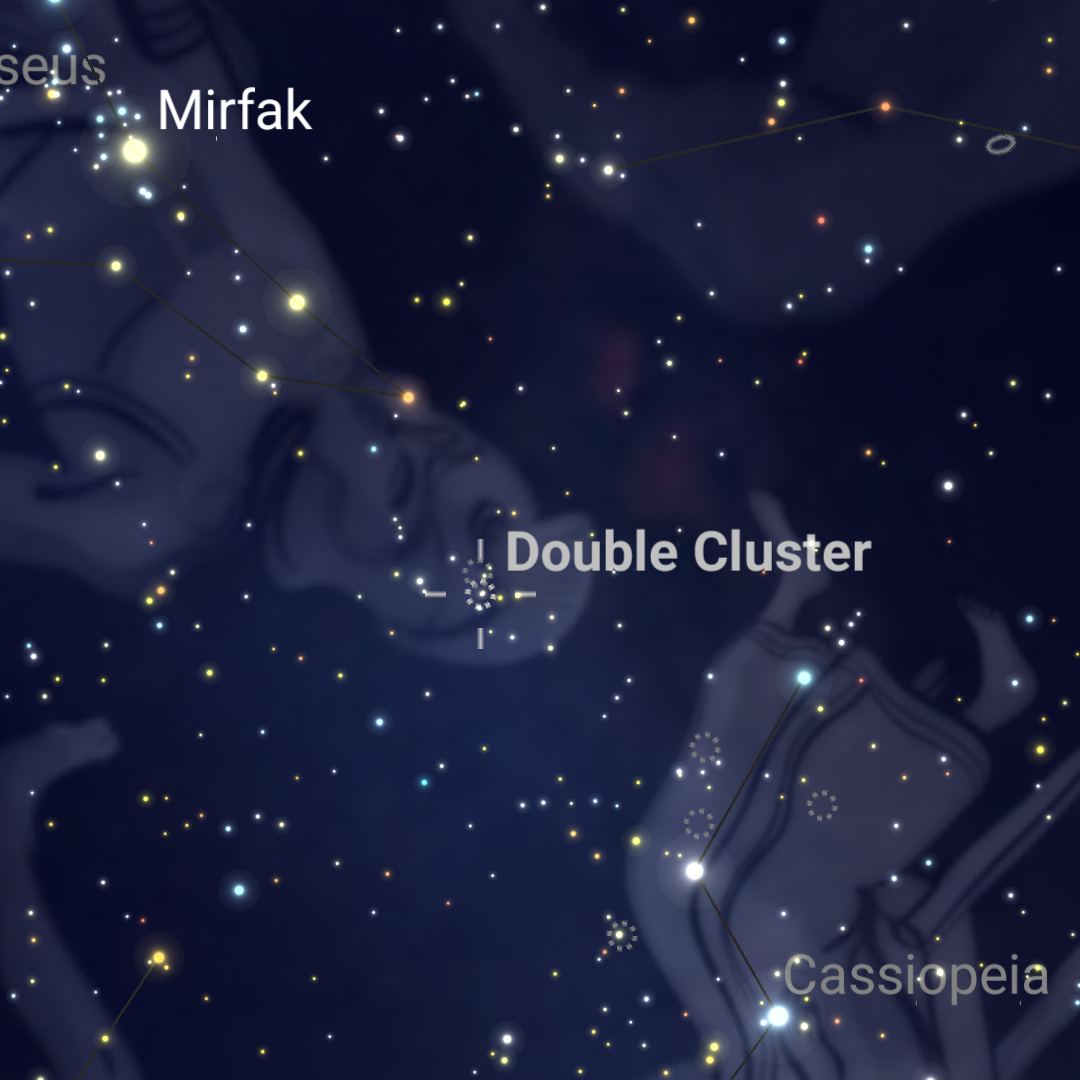
Image Credit: SkySafari
Messier 34
At first glance, Messier 34 appears to lie in the wilderness between Perseus and Andromeda, but that doesn’t mean it’s hard to find. In fact, there are two ways to locate the cluster, and the method you use will most likely depend on your familiarity with the sky.
For starters, if you know where to find Algol, the famous variable star, then you only need to look five degrees west to find the cluster, as Messier 34 will appear within the same binocular field of view.
Alternatively, starting again with Segin in Cassiopeia, hop over to Al Fakhbir in Perseus, then to Mirfak, the constellation’s brightest star. From there, you can head southwest to Misam and then south to Algol.
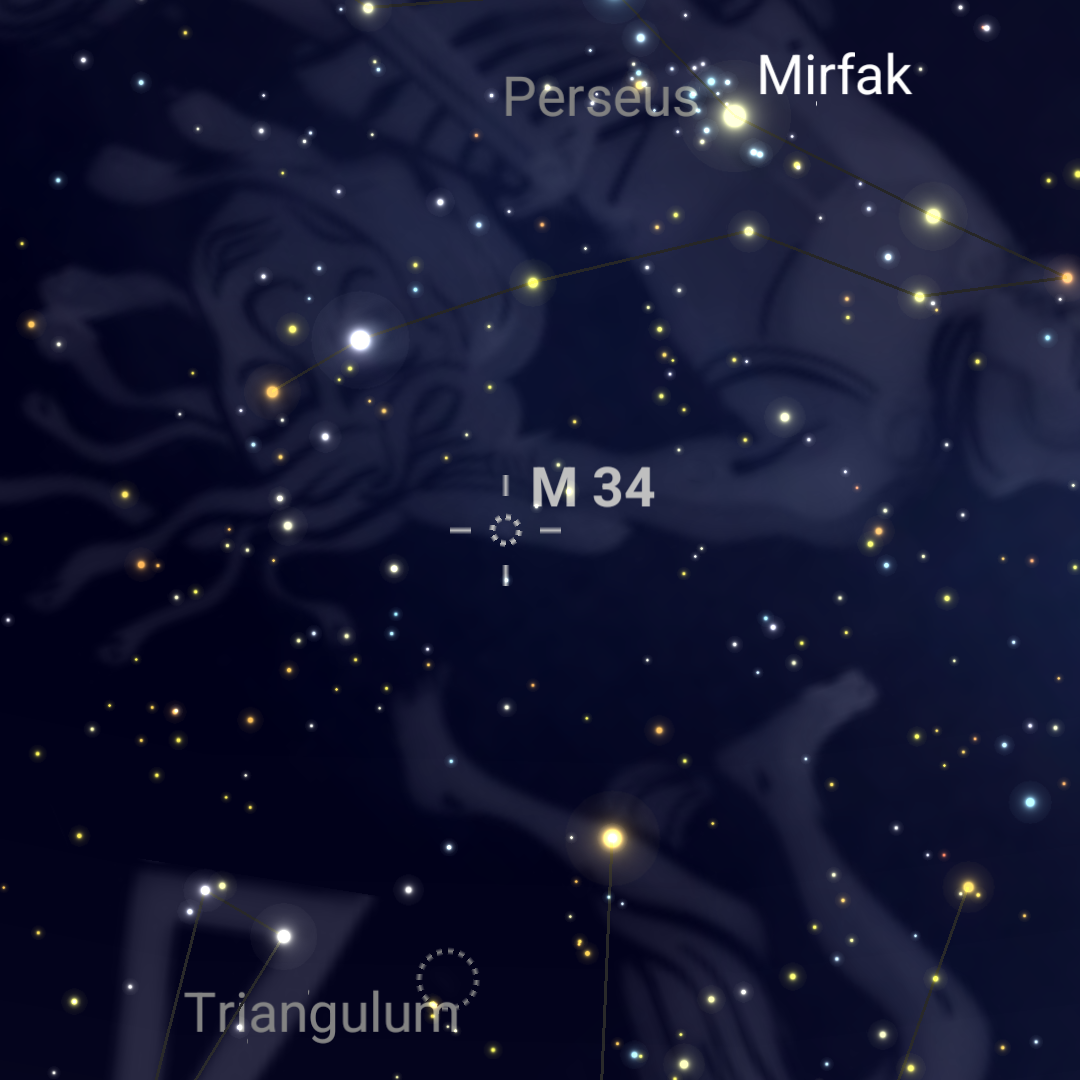
Image Credit: SkySafari
NGC 2169 - The 37 Cluster
This is one cluster that’s best observed with a telescope, but it’s bright enough to be spotted with binoculars. Start with Betelgeuse, the coppery-red star that marks the shoulder of Orion, the Hunter.
From there, hop northeast to Mu Orionis, then northeast again to Xi and Nu Orionis. Roughly midway between the two stars and just slightly to the south is NGC 2169.
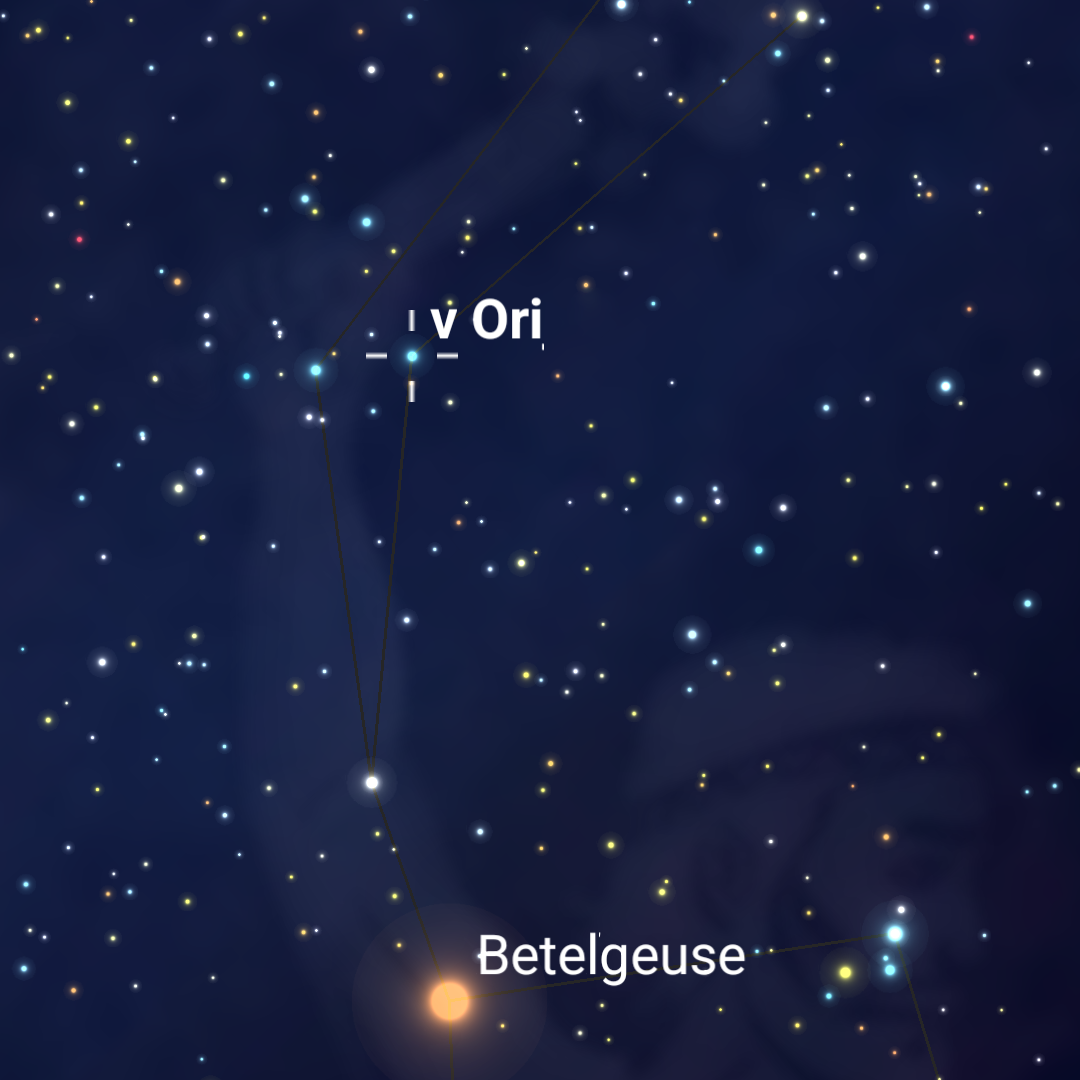
Image Credit: SkySafari
Messier 35
Like Messier 34, there are two ways you could find Messier 35, an attractive open star cluster in Gemini. First, if you’ve just located NGC 2169, look to the north for Chi1 & Chi2 Orionis. To the northeast, and within the same binocular field of view, are the stars Propus and 1 Geminorum. Just a little to the north of these two stars is Messier 35.
Alternatively, locate the star Castor by drawing a line through Mintaka and Betelgeuse in Orion. Then hop southwest to Tau Geminorum, then again to Mebsuta, and then, finally, to the three stars that form a curved line representing the foot of Castor: Tejat Posterior, Propus, and 1 Geminorum. As before, Messier 35 will appear within the same binocular field of view as all three.
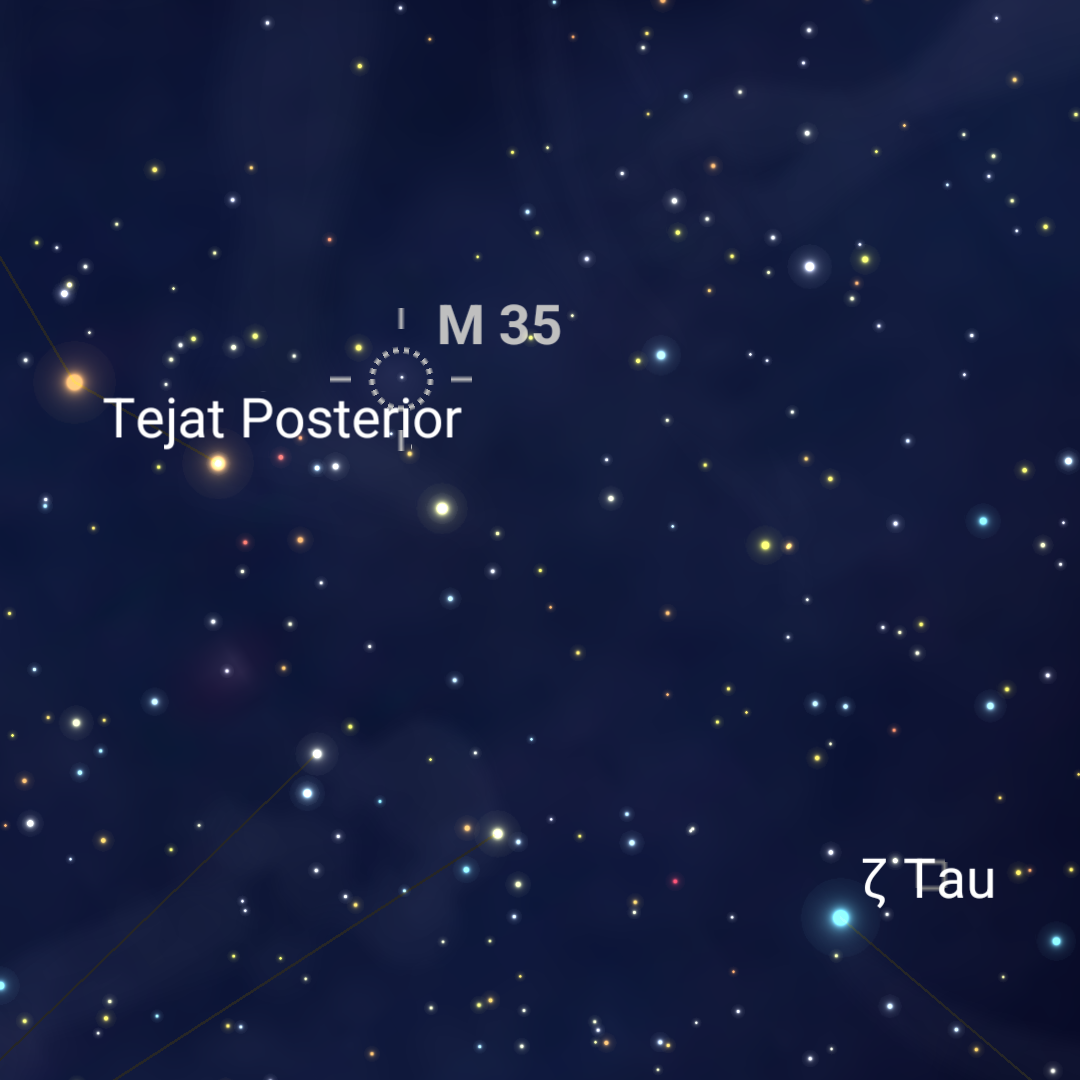
Image Credit: SkySafari
Messier 51 - The Whirlpool Galaxy
The Whirlpool Galaxy may lie just beyond the reach of many binoculars, but thanks to its position in the sky, is still relatively easily found with a telescope. Again, using binoculars will help to ensure you’re looking in the right place.
Start with Alkaid, the star at the end of the handle of the Big Dipper. From there, look to the southwest for 24 Canum Venaticorum, a star that lies on the edge of naked eye visibility. There’s a little over two degrees between the two.
Now look another two degrees south for Messier 51; it’ll mark one corner at the base of a flattened obtuse triangle, with 24 Canum Venaticorum marking the apex of the triangle and Alkaid marking the corner at the other end of the base.
As noted, Messier 51 may not be seen with binoculars, but look for an equilateral triangle of three magnitude 7 stars; Messier 51 appears close to the triangle’s southerly tip.
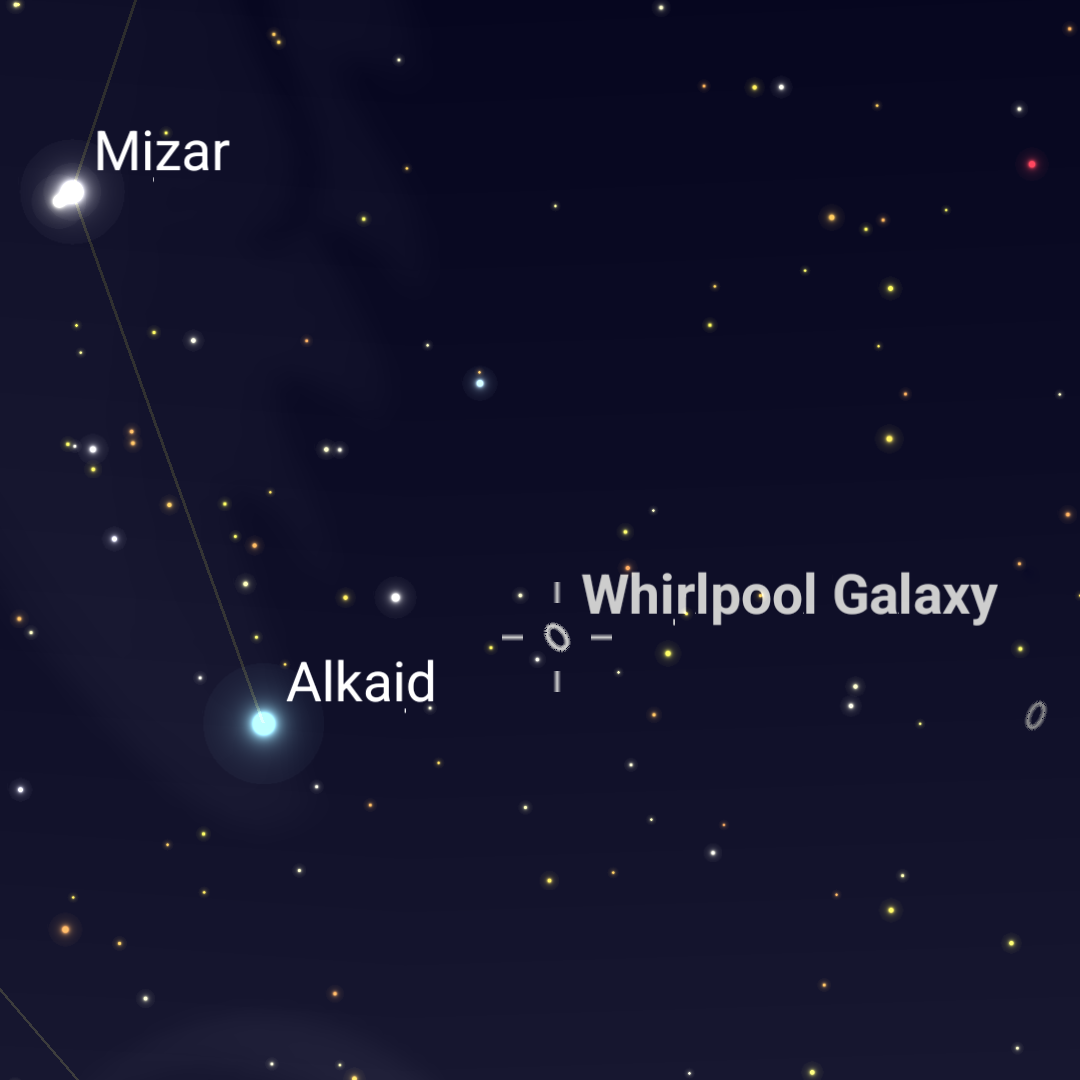
Image Credit: SkySafari
Messier 3
Here’s one cluster you’ll wish was more conveniently located, as it’s a gem that shouldn’t ever be overlooked. Start by drawing a curved line through the handle of the Big Dipper south to Arcturus in Boötes. From there, hop north to d Bootis, which will lie close to the edge of the same binocular field of view as Arcturus.
Next, head northwest to 9 Bootis; Messier 3 lies a little more than three degrees to the west of this star and within the same binocular field of view. The problem is that unless you have very dark skies and good eyesight, both d and 9 Bootis will require binoculars or some form of optical aid to spot, making the path to Messier 3 a little trickier to follow.
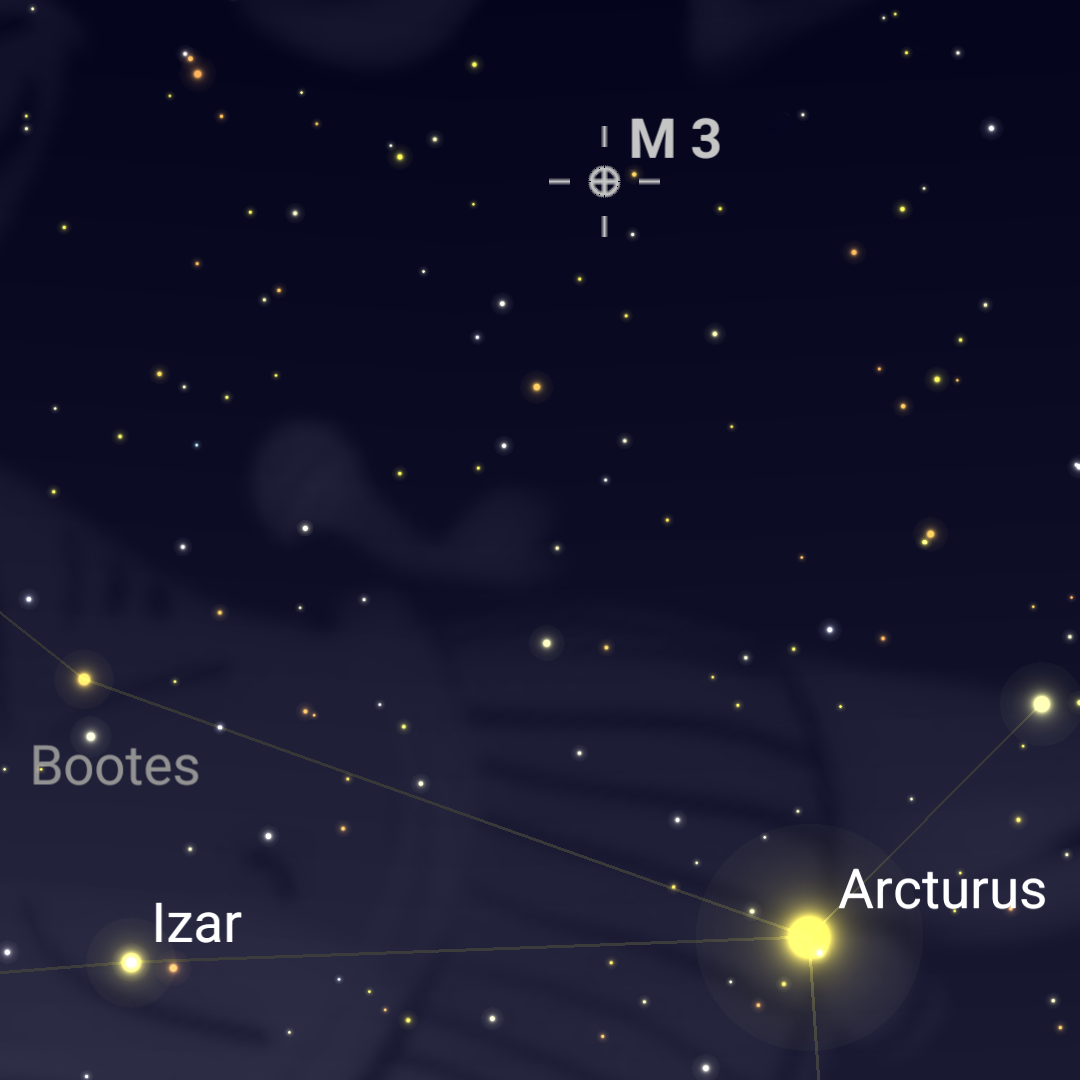
Image Credit: SkySafari
M11 - The Wild Duck Cluster
A fine open star cluster for binoculars and telescopes, Messier 11 is located in the constellation Scutum, the Shield, close to the tail feathers of Aquila, the Eagle. This one might be a little trickier to locate, as you’ll first need to find the Summer Triangle, which is made up of the stars Vega in Lyra, Deneb in Cygnus, and Altair in Aquila.
The Summer Triangle can be found due south at around midnight at the end of July, 11 PM in mid-August, and around 10 PM by the end of that month. Vega is the brightest of the three and will be visible as a brilliant, white star overhead at those times. Look to the southeast for Altair (you’ll see two fainter stars on either side of it), and then hop southwest to Delta Aquilae.
Continue southwest and look carefully for Lambda Aquilae; from here, we’re on the home stretch, and it might be easier to switch to binoculars. Within the same 10x50 field of view, you’ll see a curved line of three stars, of which Lambda is the brightest and easternmost. To the southwest is i Aquilae, then Eta Scuti. Keep following the curve just a little further, and you’ll come to Messier 11.
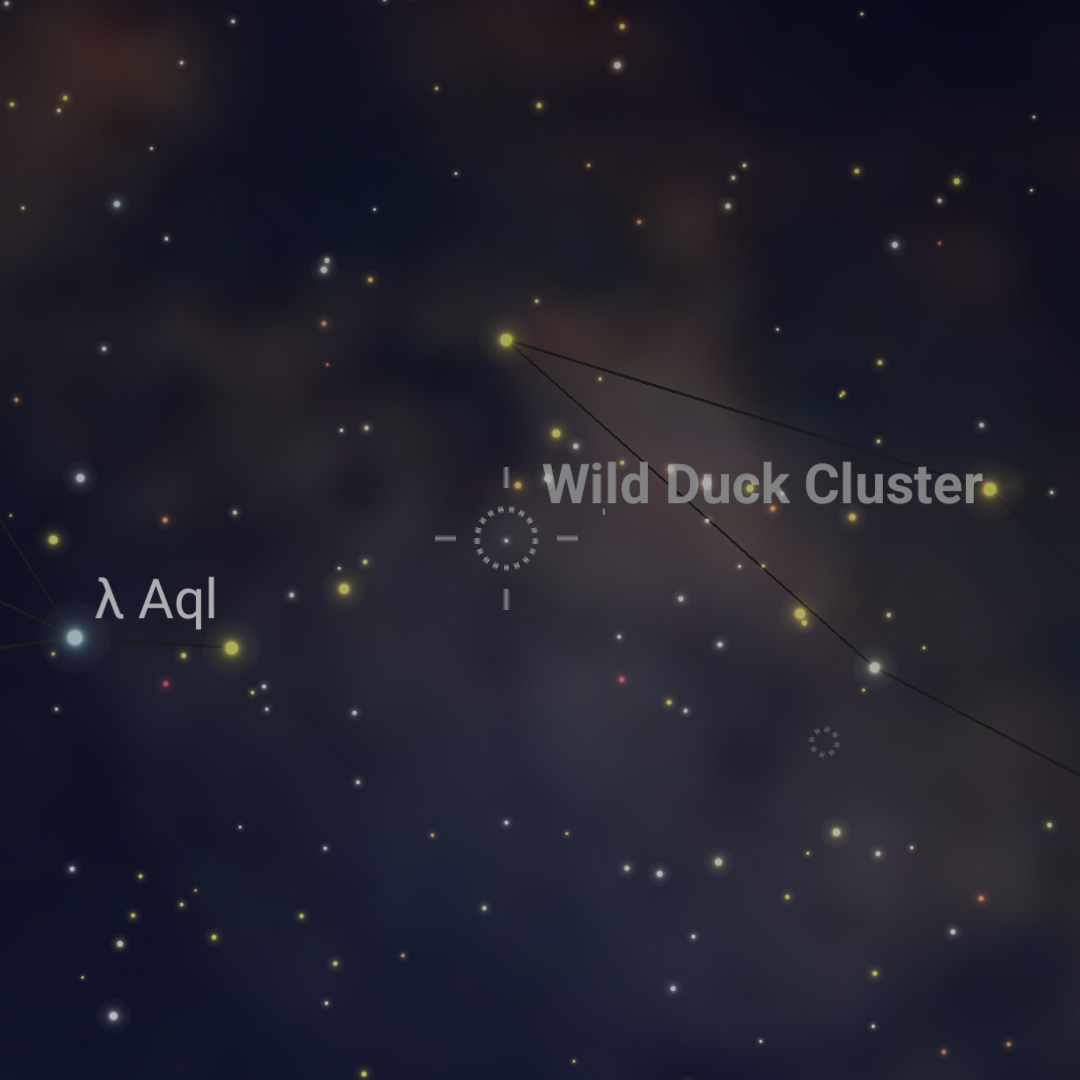
Image Credit: SkySafari
Collinder 399 - The Coathanger
This is a neat little group (not a true cluster, but an asterism) that really does look like a coathanger. It may be visible to the naked eye under dark skies, looks great in binoculars, and is relatively easily found. Start with the Summer Triangle again, but this time, hop east from Vega to Deneb in Cygnus.
Next, move southwest along the body of the swan through Sadr and Eta Cygni until you reach Albireo, which marks the head of the bird (and is an outstanding telescopic double!) Within the same 10x50 binocular field of view, and just to the south, is the double star Anser, the brightest star in Vulpecula, the Fox. Move a little south again, and you’ll see the Coathanger easily slip into view.
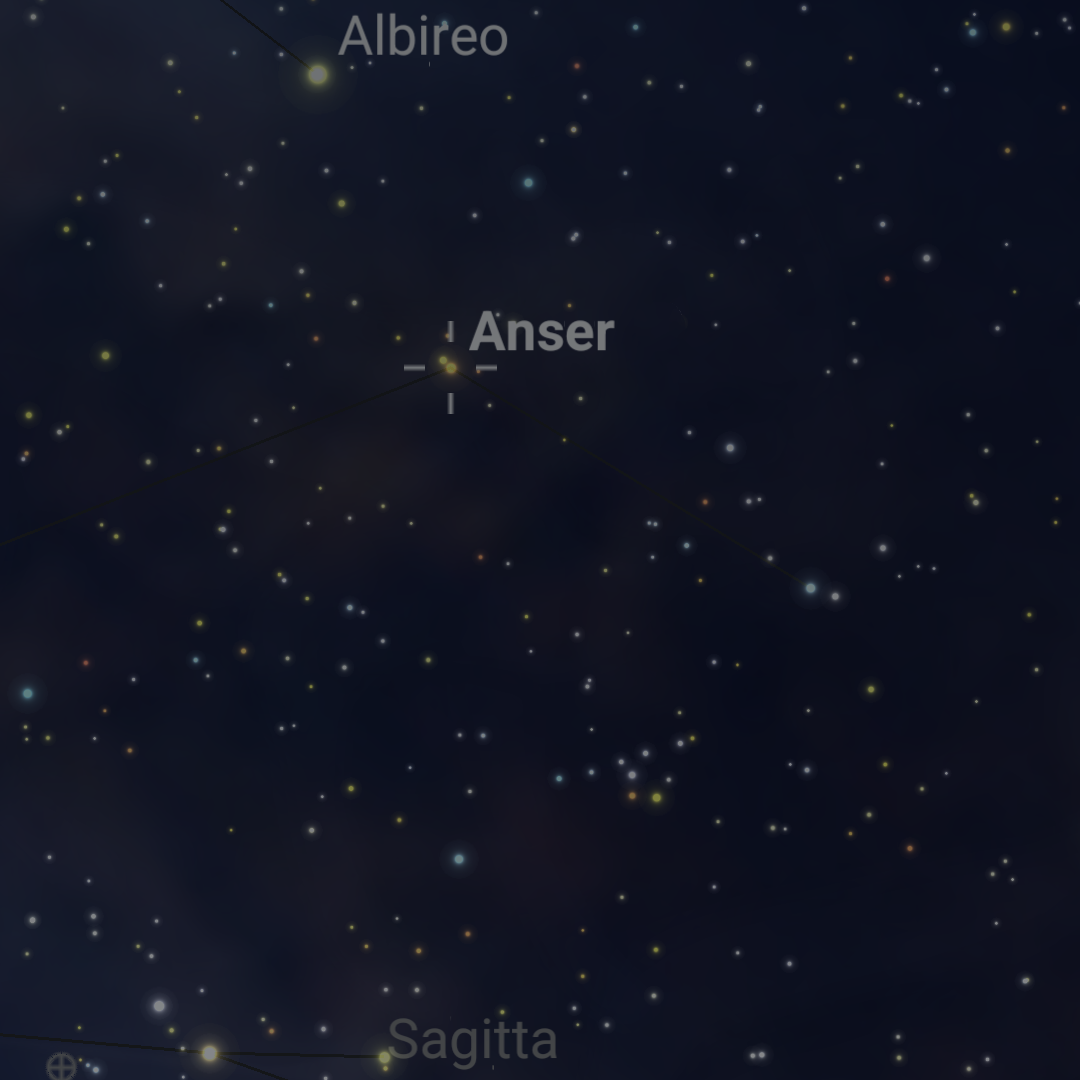
Image Credit: SkySafari
M27 - The Dumbbell Nebula
There are literally just a few planetary nebulae that can be detected with binoculars, and Messier 27, the Dumbbell Nebula, is one of them. Being a summer deep sky object, we can use a similar path as we did for the Coathanger to locate it.
That means starting at Deneb, then moving southwest through Sadr and Eta Cygni to Albireo. From here, just as before, we look for Anser, but this time we’ll head east to 13 Vulpeculae. It’s a faint star, so unless you live under dark skies, you’ll need binoculars. The Dumbbell is located two degrees to the southeast of this star, placing them both within the same 10x50 binocular field of view.
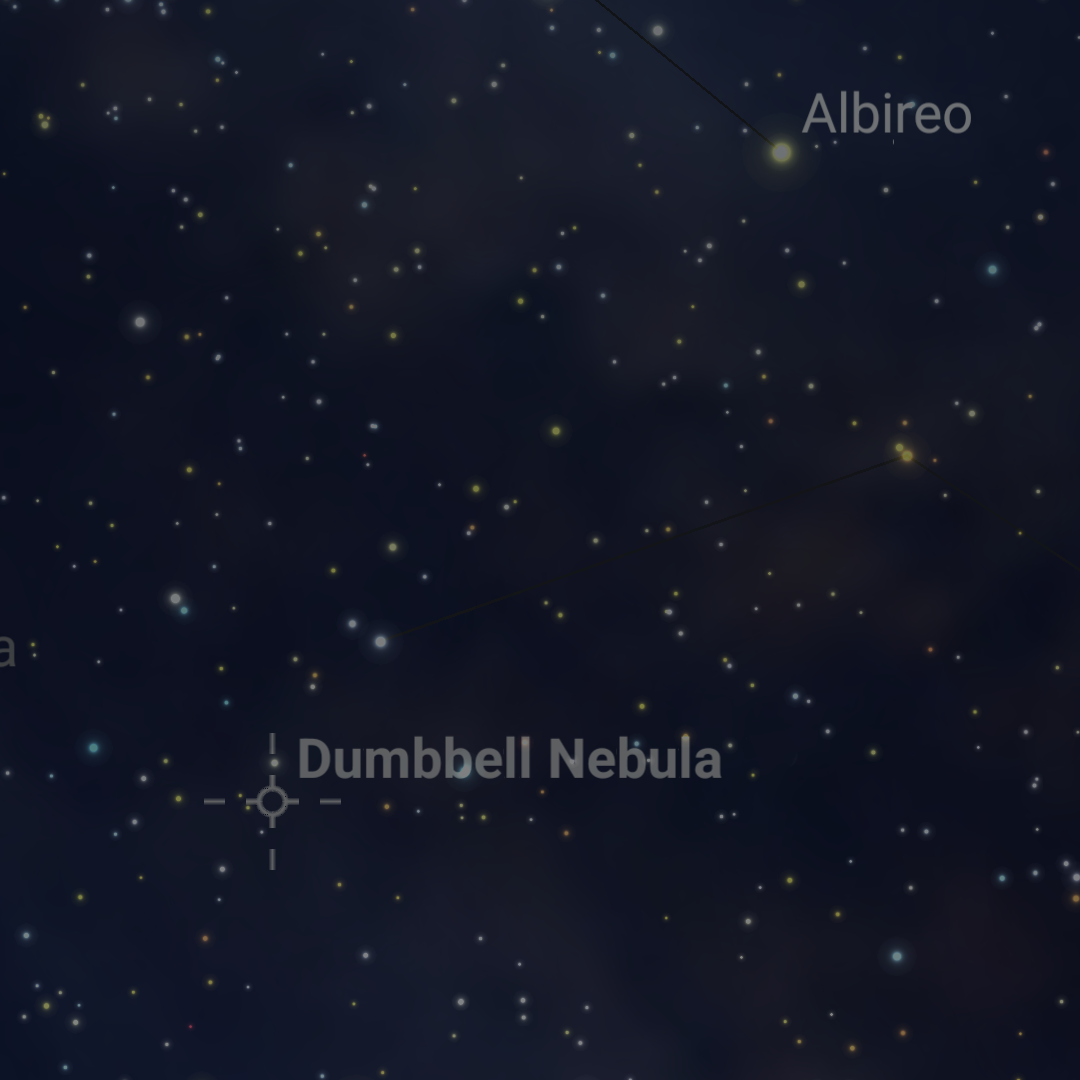
Image Credit: SkySafari

Learn More
Interested in learning more about telescopes and astronomy? Check out our AstronomyHub! We're covering everything from the best gear to the best objects to view in the sky.






